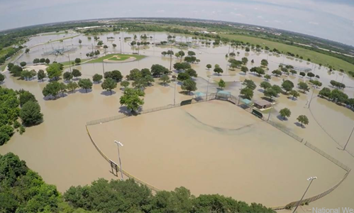Author Archive
Patrick Marshall
Patrick Marshall is a freelance technology writer for GCN.
Emerging Tech
Using AI to recognize dangerous hailstorms
Weather researchers are using facial recognition technologies to analyze approaching storms to determine whether they are likely to produce damaging hail.
- By Patrick Marshall
Infrastructure
Oak Ridge researchers developing data hazard detection tool
A new surveillance tool detects machine-generated errors in health care data.
- By Patrick Marshall
Emerging Tech
Where did that shot come from? Knowing is half the battle
Researchers are developing a program that uses microphones in protective headgear to analyze the direction of gunfire and send that info to a smartphone.
- By Patrick Marshall
Digital Government
How predicting floods is like catching a baseball
Rather than trying to reproduce the complex calculations across the environmental factors involved in a flood event, researchers built a program that rapidly predicts the impacts of coastal flooding.
- By Patrick Marshall
Cybersecurity
Can data-rich war games improve decisions?
The cloud-based, multiplayer game analyzes decision-making behaviors from choices made in thousands of games along with basic demographic information about participants.
- By Patrick Marshall
Digital Government
Defense against deepfakes
Researchers at Purdue University have developed a machine learning algorithm that examines both metadata stored in the video’s header and the pixels in the video itself to learn to spot anomalies.
- By Patrick Marshall
Cybersecurity
When ransomware strikes … negotiate?
Applying negotiation tactics to ransomware attacks can help organizations manipulate the situation before, during and after an attack.
- By Patrick Marshall
Infrastructure
Shenango: improving data center efficiency
The system detects when time-sensitive applications would benefit from more compute power and orchestrates the reallocation of packets across server cores.
- By Patrick Marshall
Emerging Tech
Unlocking the black box of AI reasoning
Research with generative adversarial networks may explain how neural networks learn and make decisions.
- By Patrick Marshall
Emerging Tech
Smartphones replicate 3D objects for virtual reality
Researchers have developed software for a standard smartphone that can create 3D images for augmented and virtual reality applications.
- By Patrick Marshall
Digital Government
Deploying AI to protect power grids
The Autonomic Intelligent Cyber Sensor can identify and divert hackers without human intervention.
- By Patrick Marshall
Cybersecurity
A quantum response to next-gen cyber threats
Quantum Xchange sends quantum-generated cryptographic keys over fiber-optic cable to securely transfer critical data.
- By Patrick Marshall
Infrastructure
Army uses game theory to thwart cloud attacks
An algorithm assigns virtual machines to hypervisors in a way that minimizes the chances of rendering a highly secure client vulnerable to attack through a client with weaker security.
- By Patrick Marshall
Emerging Tech
AI to the rescue for infrastructure
Artificial intelligence can be enlisted for prosaic chores like monitoring infrastructure that can save governments time and money.
- By Patrick Marshall
Digital Government
Beagle sniffs out email scammers
By building visual representations of the connections in the data, Beagle makes it much easier to connect the dots and ultimately understand how scam networks operate.
- By Patrick Marshall
Cybersecurity
Unmasking AI-assisted cyber attacks
Researchers are developing algorithms that can detect when malware uses adversarial machine learning to attack networks and evade detection.
- By Patrick Marshall
Emerging Tech
Army researchers play 'Marco Polo' to locate personnel, robots
An algorithm analyzes received wireless signals to determine their direction of arrival even in obstacle-rich environments.
- By Patrick Marshall
Infrastructure
Sprocket kicks video processing into high gear
The video processing framework uses serverless cloud infrastructure to run tasks in parallel and reduce latency and cost.
- By Patrick Marshall
Cybersecurity
Phishing protection boosts mobile security
The Lookout mobile security platform spots phishing attempts in emails, texts, social media posts, apps or websites.
- By Patrick Marshall
Digital Government
A better eye in the sky
Geocoded, high-resolution imagery from aircraft cameras delivers critical details for responders.
- By Patrick Marshall











































